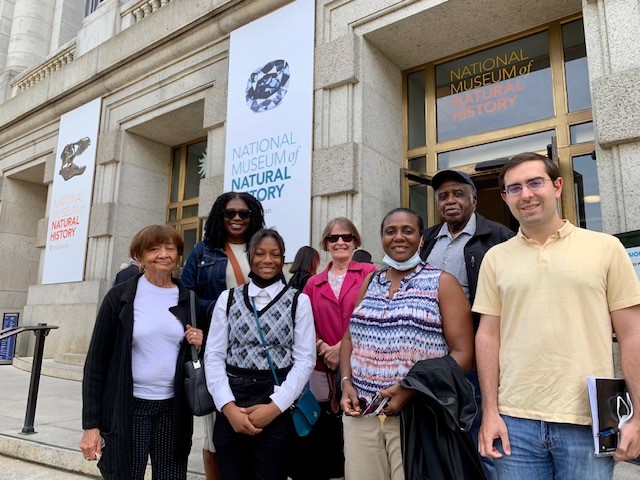
Smithsonian Reveals Details of Those Enslaved at Catoctin Furnace
May 30, 2022AARCH Society was honored to receive a personal, behind-the-scenes tour at the Smithsonian Museum of Natural History in May to learn about their forensic anthropology research findings on the remains of several enslaved workers from the Catoctin Iron Furnace.
The remains of a woman in her 30s, her infant child, and a teenage boy were uncovered during the 1979 Route 15 expansion. Excavation for the highway revealed a cemetery designated for enslaved workers of the iron works. Thirty-five graves, located within the highway construction right of way, were excavated.
“There are so many important stories to be told about the contributions and ongoing legacy of the African Americans who worked at the furnace and their descendants,” said Protean Gibril, President of AARCH Society. “This was a fascinating yet emotional experience for us. It’s important to understand this history, but sad to see the evidence of the hardships so many people faced daily and the toll it took.”
Smithsonian forensic anthropologists Doug Owsley and Kari Bruwelheide began the tour with a brief explanation of forensic anthropology and the details that can be culled from skeletal remains about a person’s lifestyle, environment, physical condition and hardships, and diet. The team has looked at more than 15,000 skeletons from historical sites across the nation.
With the technological advancements of 3D modeling, the Smithsonian has been able to reconstruct physical likenesses of some of the remains in their collection, including a young woman who lived in colonial Jamestown and two individuals found at Catoctin Furnace: a 30- to 35-year-old mother and a teenager.
The Catoctin Furnace Historical Society began a reanalysis of the enslaved workers’ remains in 2013. From the bones, Owsley and Bruwelheide could see spinal deformation from carrying extremely heavy loads and high levels of zinc in the bones of one worker. Zinc, released during iron production, can cause anemia when inhaled in high doses. They also noted craniosynostosis, a fusing of plates in the skull which can be heredity or possibly caused by high exposure to smoke. This condition can damage the brain when it occurs early in a child’s development.
“The bones of Catoctin men and women show – almost literally – the effects of back-breaking labor. One elderly man’s spine was so damaged by a lifetime of hard work that he was unable to stand up straight,” said Bruwelheide.
Elizabeth Comer, President of the Catoctin Furnace Historical Society, has collaborated with the Smithsonian on this project and attended the May tour. “Against their will, the enslaved artisans of Catoctin Furnace produced vast wealth and prosperity for the owners, one of whom, Thomas Johnson, became the first governor of Maryland, in 1777, and a representative to the Maryland convention that ratified the federal constitution in 1788,” Comer said. “Even as he was endeavoring for freedom from Great Britain, he was the owner of the largest number of enslaved persons in Frederick County.”
The Smithsonian team has been able to extract ADNA from the remains of 29 individuals, which, if added to ancestry databases, may enable descendants to trace their history back to Maryland’s colonial days.
It is one of many ironies inherent in our nation’s past that enslaved workers at the Catoctin Furnace provided iron used to make cannonballs during the colonies’ War for Independence against Great Britain. Watch a National Park Service video on the history of African Americans at the Catoctin Iron Furnace.